This article describes how to scan for and eliminate malware and viruses in Windows 11.
If you start to notice your computer running slowly, programs launching automatically, or frequent pop-up messages appearing, these could be signs of a virus or malware infection.
To address these issues, ensure that your PC is regularly updated and that you are using both antivirus and antimalware software.
Antivirus and antimalware software can scan for viruses and other harmful programs on your PC. Fortunately, Windows 11 includes a built-in antivirus program, Microsoft Defender, which helps you remove malicious software.
Scan for viruses in Windows 11
Windows Defender will be your sole protection if you’re using Windows 11 without any third-party antivirus software. To scan for viruses, follow the guidelines below.
Windows 11 has a centralized location for the majority of its settings. Everything can be done, from system configurations to creating new users and updating Windows from its System Settings pane.
To get to System Settings, you can use the Windows key + I shortcut or click on Start ==> Settings, as shown in the image below:
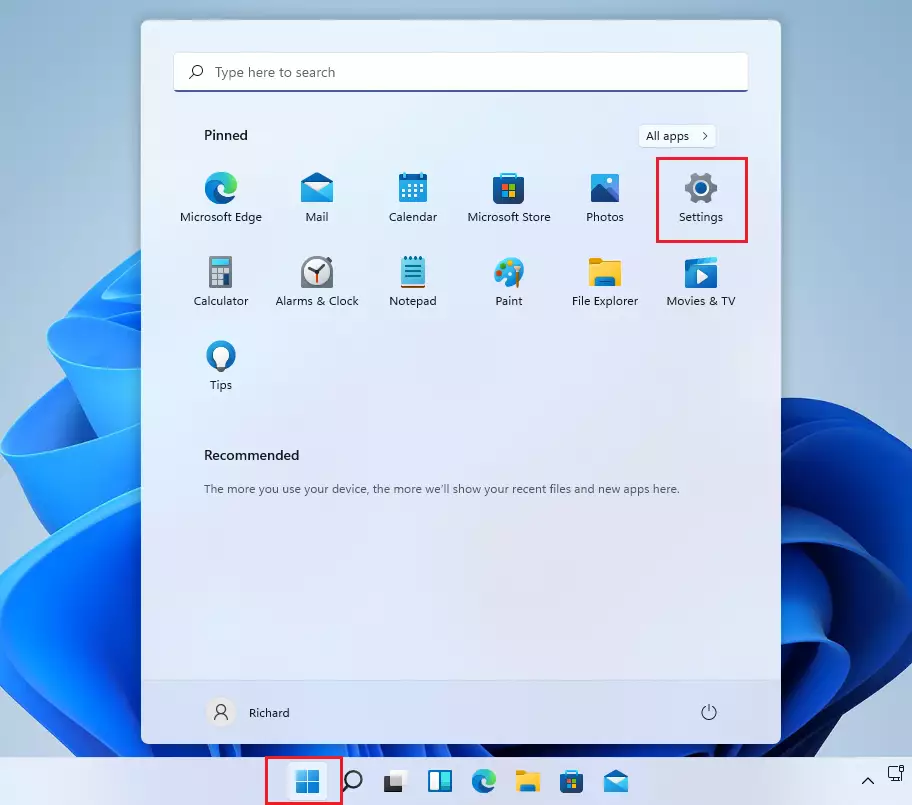
Alternatively, you can use the search box on the taskbar to search for Settings. Then select to open it.
In Windows Settings, click on Privacy & Security, then select Windows Security from the right pane of your screen.
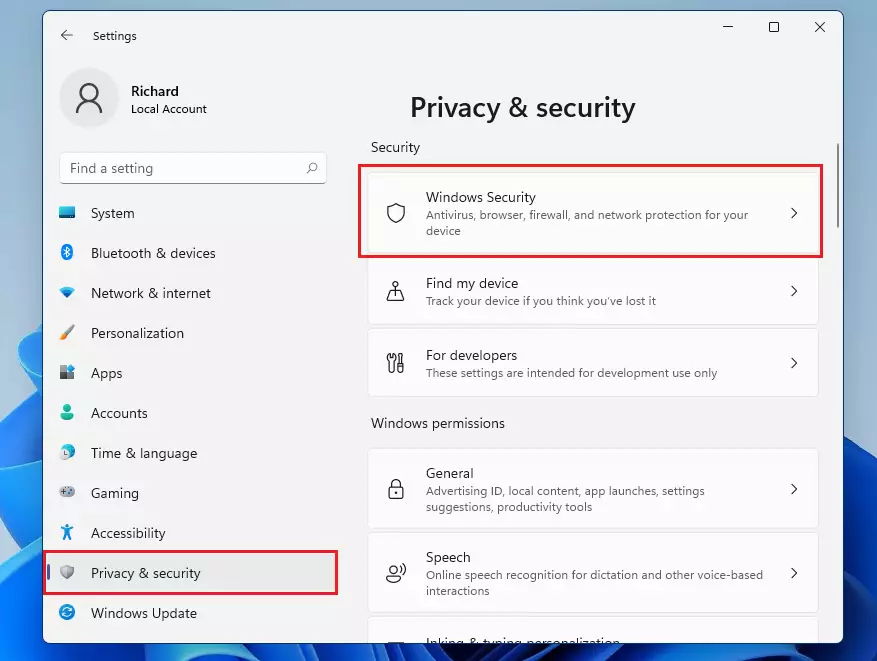
In the Windows Security settings pane, click the “Open Windows Security” button as highlighted below.
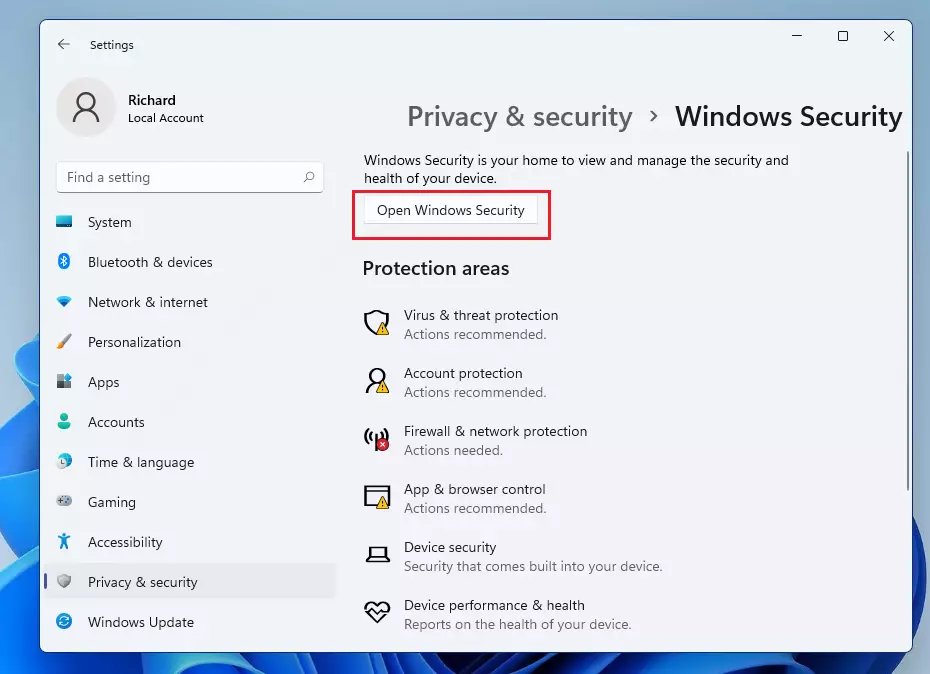
When you open Windows Defender, ensure the dashboard looks similar to the one below, with no section needing your attention. If any section has a red x or warning, address these quickly to protect your computer.
Below is a screenshot of how Microsoft Defender looks when it’s healthy.
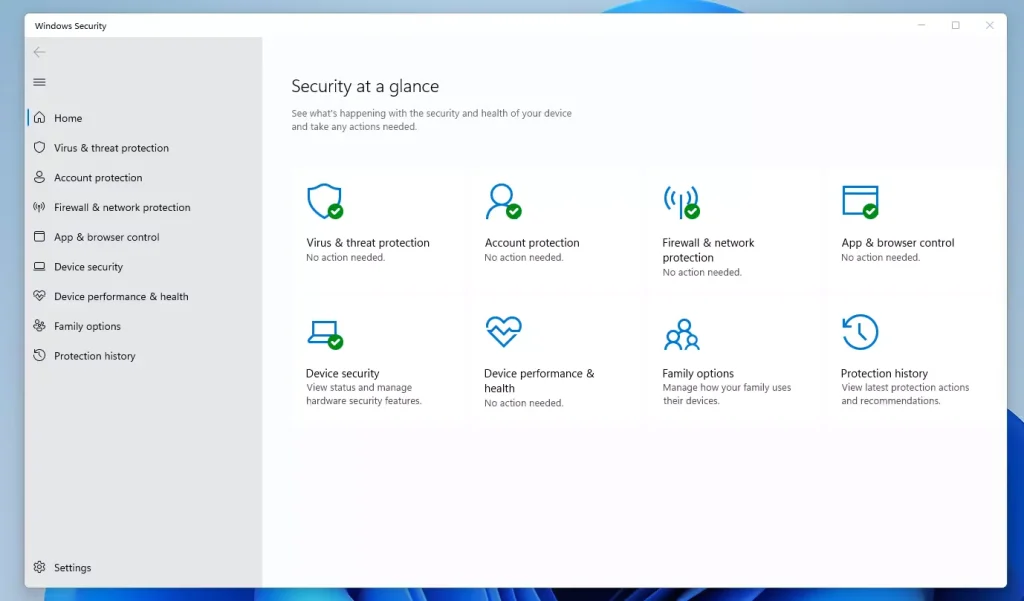
Once Microsoft Defender opens, select Virus & threat protection, then select Protection Updates under Virus & threat protection updates.
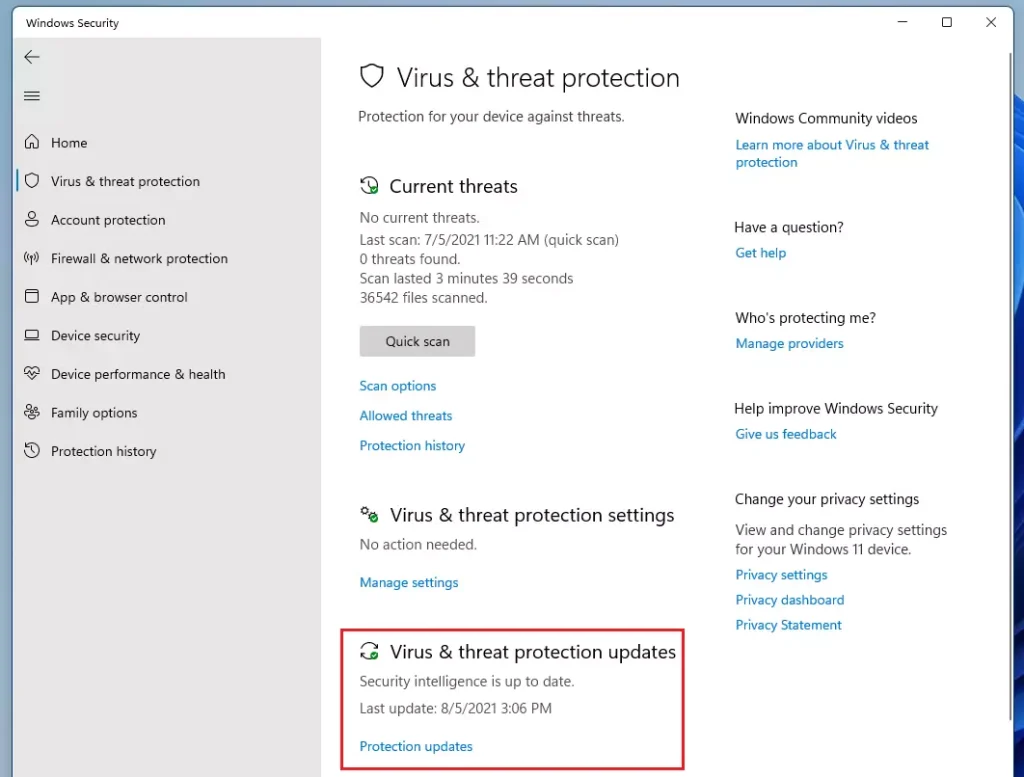
On the Protection updates screen, select Check for Updates to ensure you have the most recent updates.
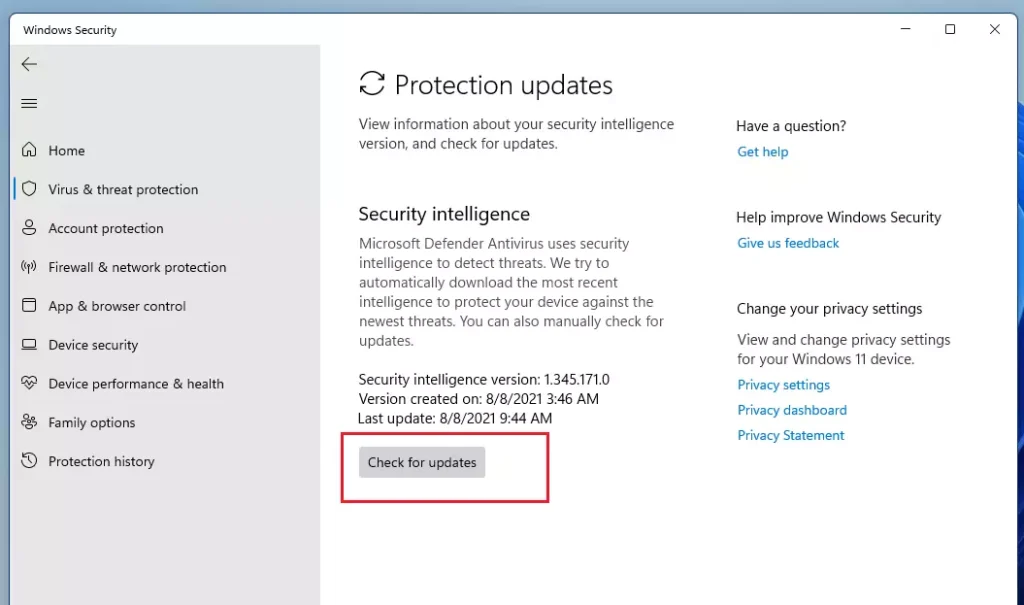
Go back to Virus & threat protection, then select Quick Scan.
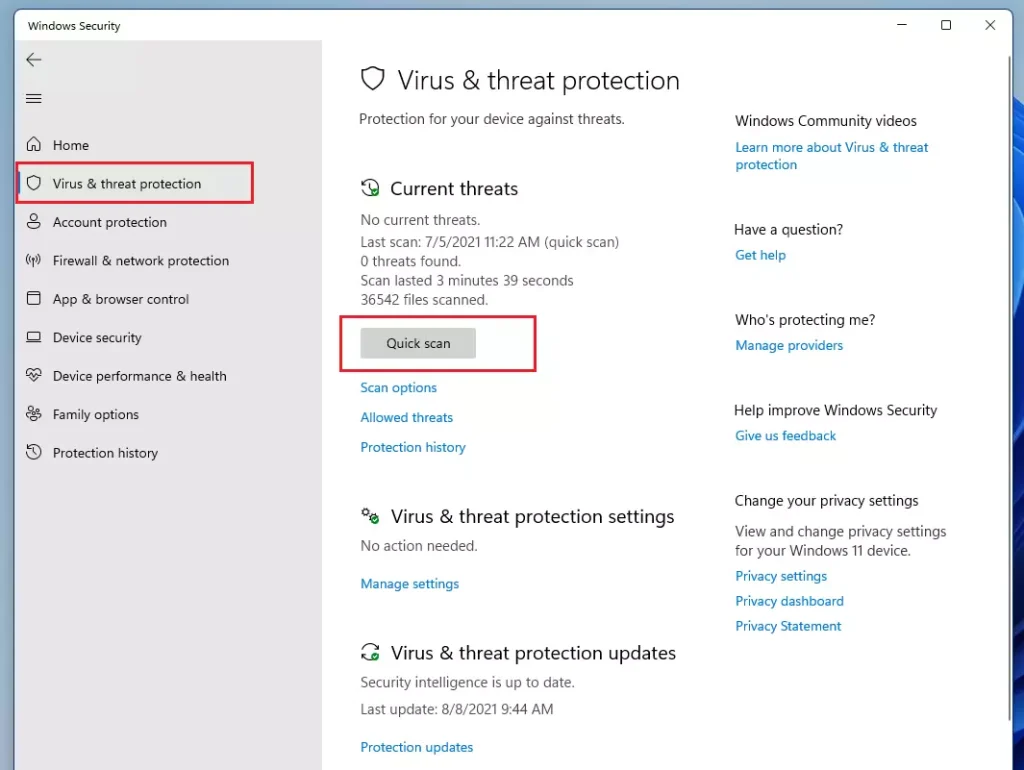
Wait for Windows Security to finish scanning for viruses and malware.
How to run an advanced scan with Microsoft Defender
If the quick scan doesn’t find any viruses or malware, you can choose to run the advanced scan. This scan takes longer but searches more extensively for threats on your PC.
Select Start > Settings > Privacy & Security> Windows Security and then Virus & threat protection.
Under Current threats, select Scan options.
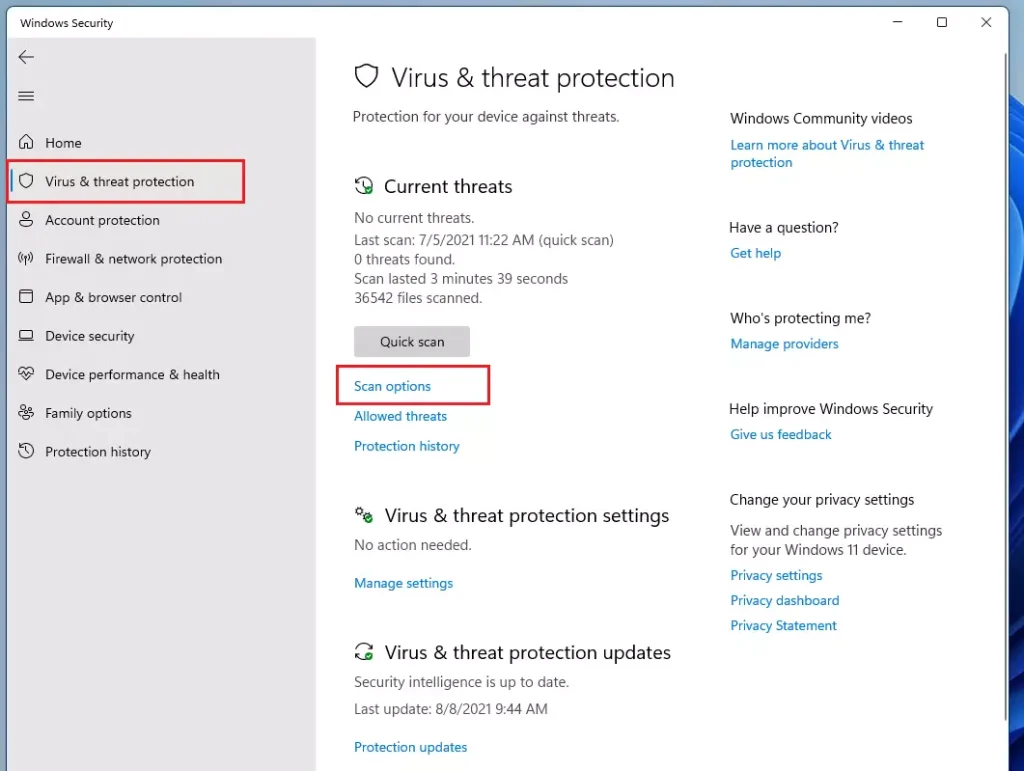
Select one of the scan options:
Full scan (check files and programs currently running on your device)
Custom scan (scan specific files or folders)
Microsoft Defender Offline scan (run this scan if your device has been, or could potentially be, infected by a virus or malware).
Select Scan Now.
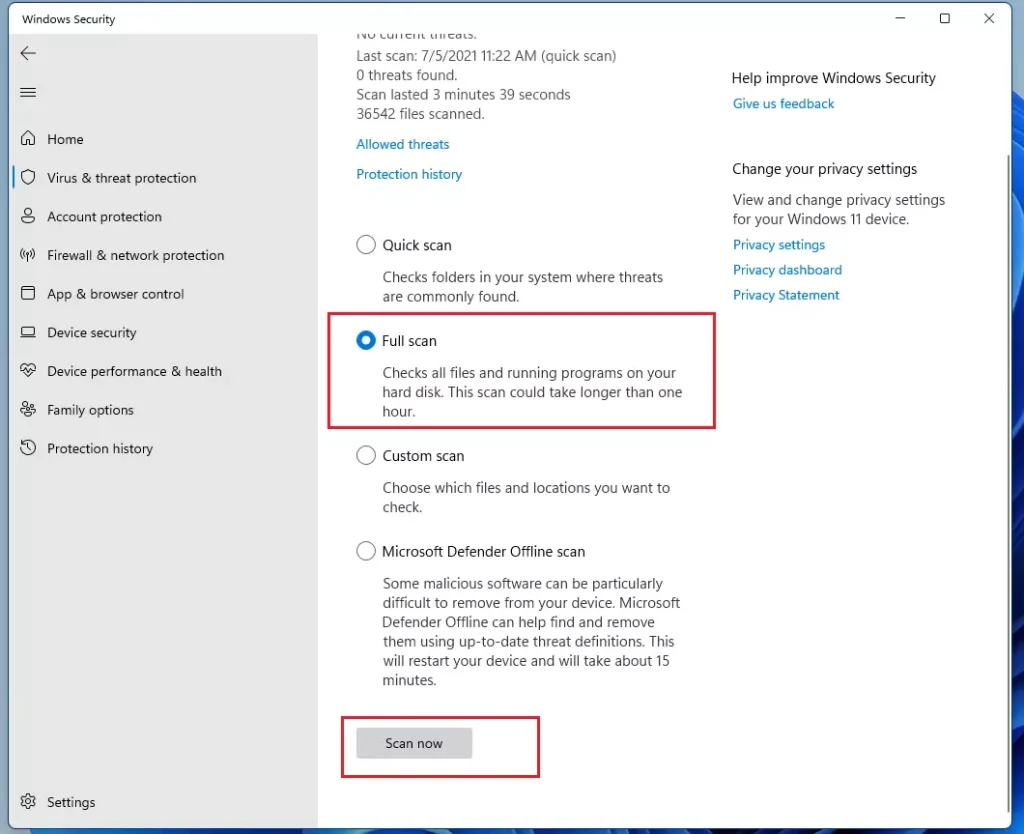
How to schedule a Microsoft Defender scan
To schedule the Microsoft Defender Antivirus program to only scan your computer at the time and frequency you choose, click Start => then search for Task Scheduler.
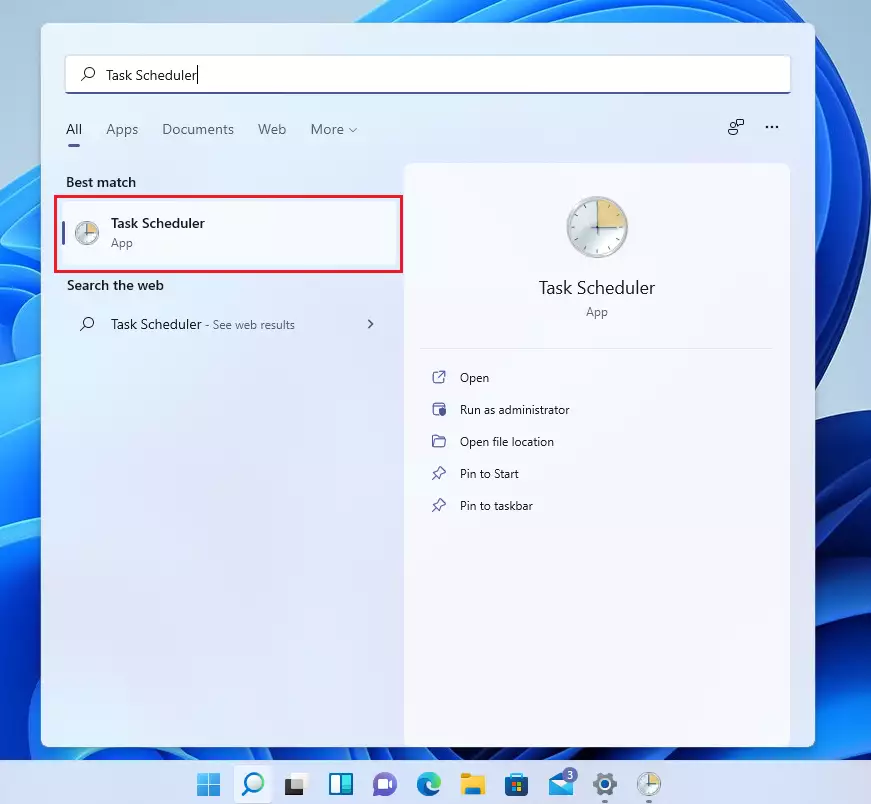
Select Task Scheduler from the result listed on the menu.
When Schedule Tasks opens, in the left pane, expand Task Scheduler Library > Microsoft > Windows, and then scroll down and double-click (or press) the Windows Defender folder.
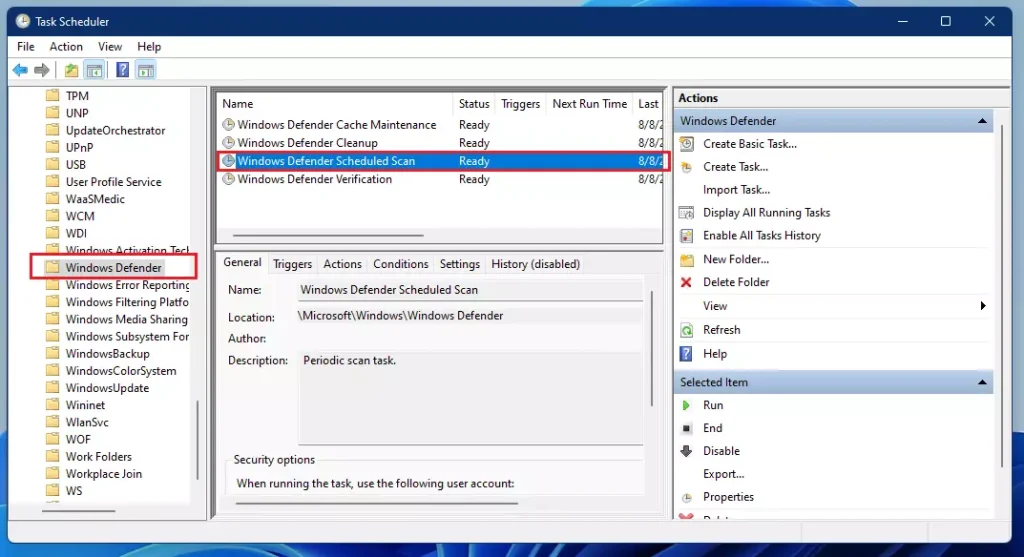
Double-click (or press twice) Microsoft Defender Scheduled Scan in the top center pane.
This should open the task properties. In the Microsoft Defender Scheduled Scan Properties (Local Computer) window, select the Triggers tab, go to the bottom of the window, and then tap or click New.
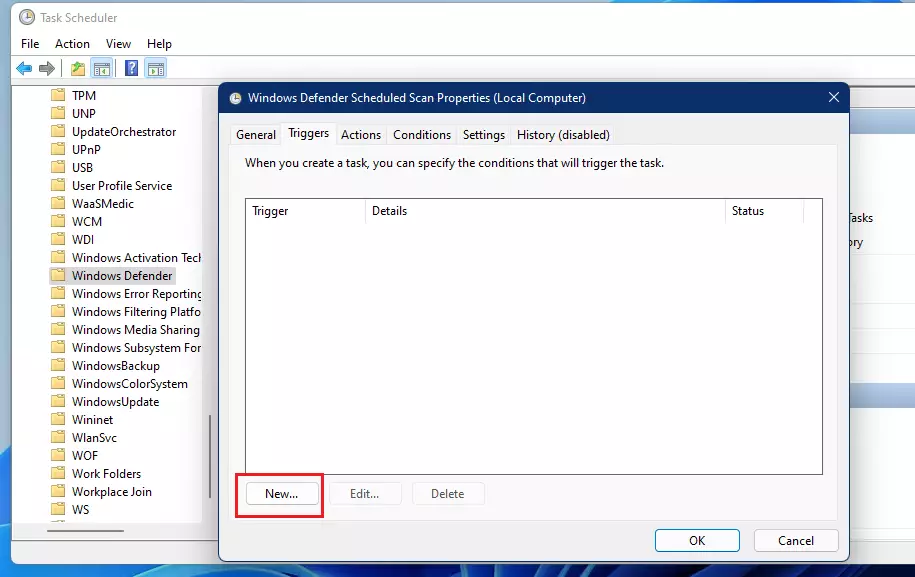
On the task setting pane, specify how often you want the scans to run and when you’d like them to start. This should always run at the exact time you define here. But your computer must be powered on and running for this to work.
If your computer is shutdown, this task will fail to run
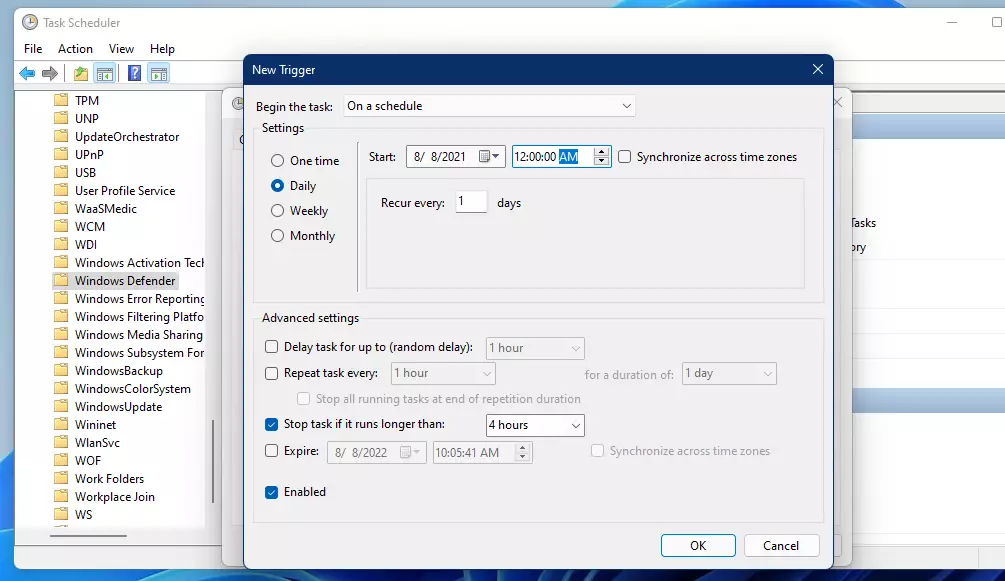
The trigger above runs daily at midnight and stops the task if it runs for more than 2 hours. You can configure more advanced settings, such as repeating every 1, 4, or 8 hours. You can also delay the task randomly. But the basic settings should work fine.
Conclusion:
- Regularly scan your Windows 11 device to detect and remove malware and viruses.
- Utilize Microsoft Defender as your primary antivirus solution if no third-party software is installed.
- Keep protection updates current to enhance safety against evolving threats.
- Perform quick and advanced scans periodically for a thorough system examination.
- Consider scheduling scans to automate the process and maintain consistent protection.
- Stay vigilant for signs of malware and take action immediately if issues arise to safeguard your computer’s performance and data.

Leave a Reply